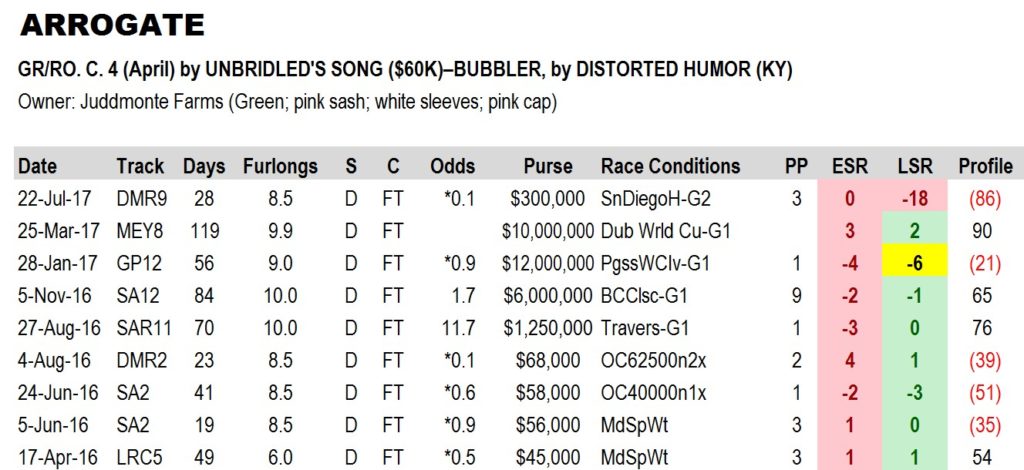I often talk about speed rations — both ESRs and LSRs — in my handicapping pieces. These are my own pace figures, designed to identify early and late energy disbursement. Below is a brief explanation. For a more detailed look at how I use these figures when I handicap, please go to Hello Race Fans or watch my tutorial YouTube video.

Early Speed Ration (ESR): A measurement of a horse’s early energy expenditure in relation to the total race requirements. The lower the figure, the greater the horse’s early exertion in that event.
-15= Demanding.
-10= Brisk.
-5= Moderate.
0= Soft.
Animals that combine low ESRs with high speed figures are often prime candidates to win in wire-to-wire fashion. So too are those steeds with a significant overall ESR advantage.
Late Speed Ration (LSR): A measurement of a horse’s late energy expenditure in relation to the total race requirements. The higher the figure, the greater the horse’s late exertion in that event.
0= Excellent.
-5= Good.
-10= Fair.
-15= Poor.
Because late speed is measured at a time that each horse is being asked for its maximum effort, LSRs can be a great indication of form as well. Young horses with improving late speed rations are often superior to older, more experienced rivals with established figures. Furthermore, any animal that combines a positive Pace Profile with high relative LSRs and good speed figures must be given extra consideration. Entrants that show positive LSRs or those coming off of a big win punctuated by a superior LSR are especially strong contenders.
LSRs are also very effective in a negative context. Horses with consistently poor figures in relation to the rest of the field make notoriously poor favorites and can often lead to great overlays on other, less fancied runners.
Pace Profile: A simple comparison between a horse’s late speed ration and the early speed ration of the race in which it was earned. A positive (+) profile is desirable and serves to authenticate especially impressive LSRs. The pace profile is an easy, yet crucial means of relating early speed to late speed.
The Pace Profile of a particular race can be especially useful when horses are switching distances/surfaces. For example, an animal that has been competing in dirt sprints might be given extra consideration in a turf route if it shows prior positive (+) pace profiles, as distance races on the lawn tend to emphasize late speed.
